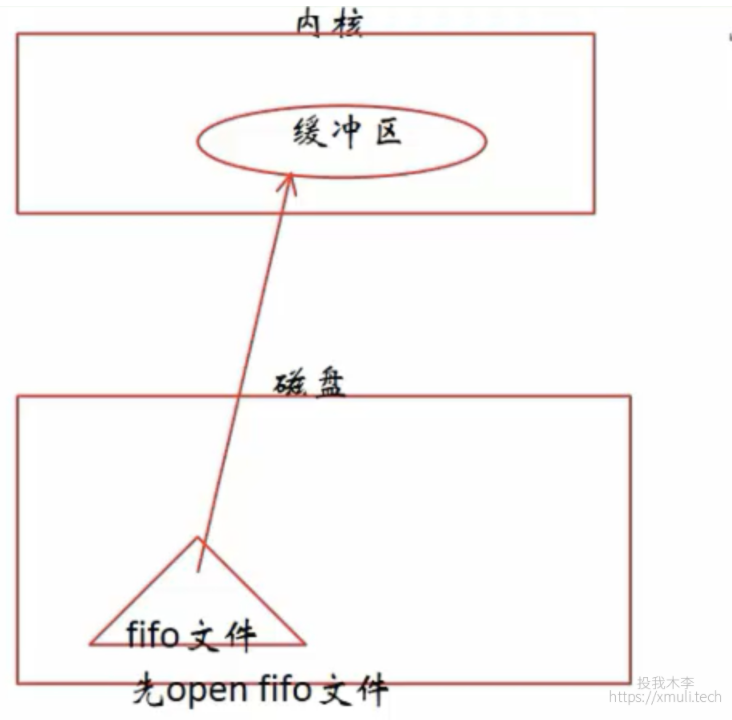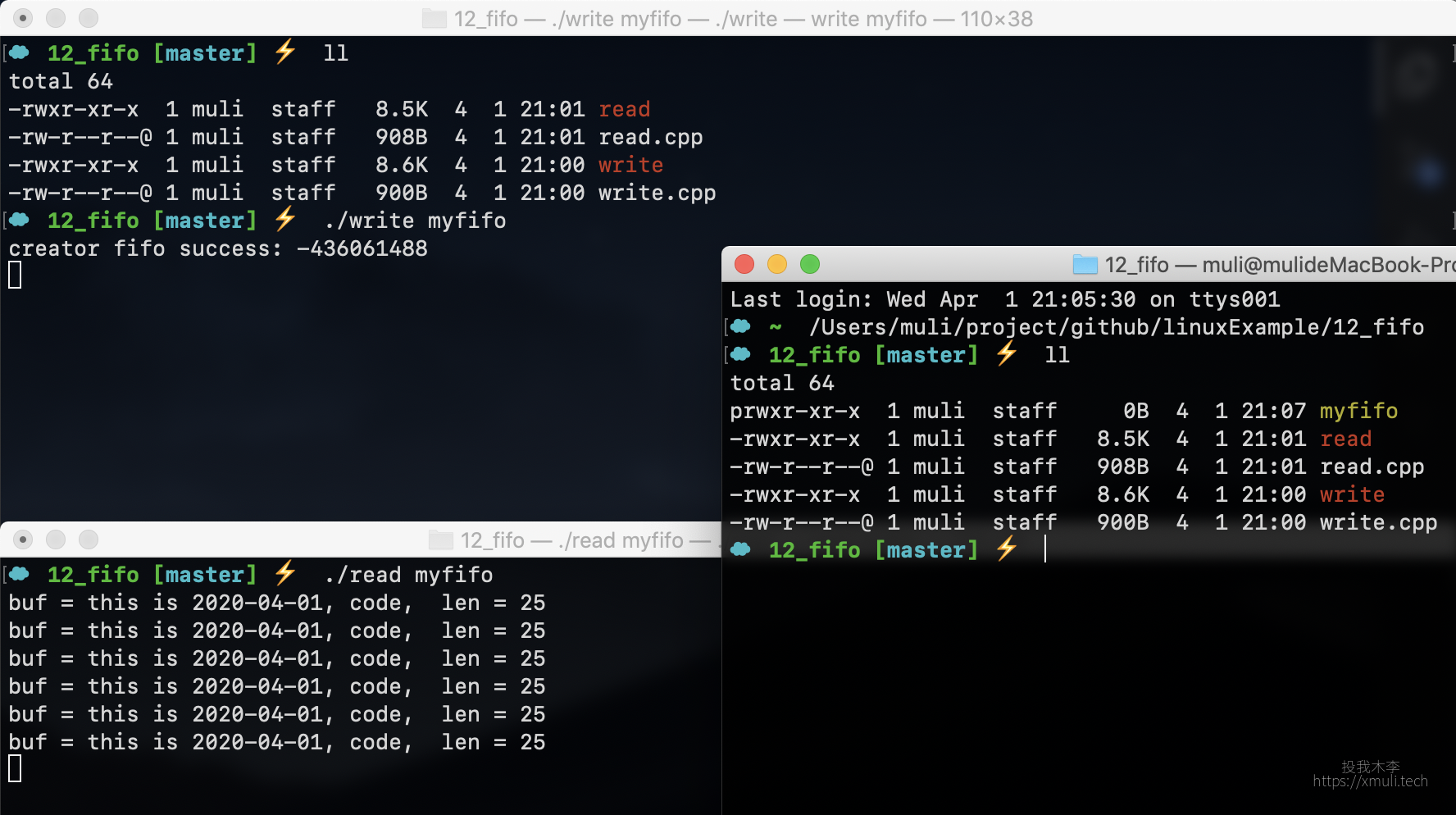简 述: 在上一篇中,写了有血缘关系的进程间的通信,使用匿名管道 pipe,本篇是介绍,对于无血缘关系的进程间通信,可以采用(有名)管道的 fifo 方式。
[TOC]
本文初发于 “偕臧的小站“,同步转载于此。
编程环境:
💻: uos20 📎 gcc/g++ 8.3 📎 gdb8.0
💻: MacOS 10.14 📎 gcc/g++ 9.2 📎 gdb8.3
进程间通信 IPC:
进程间通信(Inter Process Communication),字母首写即为 IPC。
- 进程间常用的 4 种方式:
- 管道 (简单)
- 信号 (系统开销小)
- 共享映射区 (有无血缘关系的进程间通信都可以)
- 本地 socket 套接字 (稳定)
有名管道(fifo):
int fifo(int fildes[2]);适用于无血缘关系的进程之间的通信。进程之间是不要使用 sleep() 函数的,因为管道默认就是堵塞的。虽然实现形态上是文件,但是管道本身并不占用磁盘或者其他外部存储的空间。在Linux的实现上,它占用的是内核的一段缓冲区空间。

- 本质:
- 是内核缓冲区。也是伪文件(不占用磁盘空间)
- 特点:
- 有名管道
- 在磁盘上有这样一个文件
ls -l -> p - 伪文件,在磁盘大小永远为 0
- 在内核中有一个对应的缓冲区
- 使用半双工的通信方式
- 使用场景:
- 适用于没有血缘关系的进程间的通信
- 创建方式:
- 命令: mkfifo 管道名
- 函数: mkfifo()
- fifo 文件可以使用 IO 函数进行操作
- open() / close()
- read() / write()
- 不能执行 lseek 操作
写一个例子:
有两个进程 a 和 b,分别用 write.cpp 和 read.cpp 进行实现,然后进程 a 往一个管道里面写数据,进程 b 从这个管道里面读取数据。
代码实现:
这里写
writ.cpp,之后运行可执行程序 writ,当做 a 进程 ,往这个管道里面一直写数据:#include <stdio.h> #include <unistd.h> #include <sys/wait.h> #include <fcntl.h> #include <sys/types.h> #include <sys/stat.h> #include <stdlib.h> #include <string.h> int main(int argc, char *argv[]) { if (argc < 2) { printf("请按照格式输入: ./write myfifo\n"); _exit(1); } int ret = access(argv[1], F_OK); //判断文件是否存在 if (ret == -1) { int r = mkfifo(argv[1], 0777); if (r == -1) { perror("[creator fifo file] "); _exit(1); } else { printf("creator fifo success: %d\n", argv[1]); } } int fd = open(argv[1], O_WRONLY); if (fd == -1) { perror("[open file] "); _exit(1); } char const *p = "this is 2020-04-01, code"; while (true) { // sleep(2); //用来验证管道阻塞这一属性的 int len = write(fd, p, strlen(p) + 1); } close(fd); return 0; }这里写
read.cpp,之后运行可执行程序 read,当做 b 进程 ,往这个管道里面一直读数据:#include <stdio.h> #include <unistd.h> #include <sys/wait.h> #include <fcntl.h> #include <sys/types.h> #include <sys/stat.h> #include <stdlib.h> int main(int argc, char *argv[]) { if (argc < 2) { printf("请按照格式输入: ./read myfifo\n"); exit(1); } int ret = access(argv[1], F_OK); //判断文件是否存在 if (ret == -1) { int r = mkfifo(argv[1], 0777); if (r == -1) { perror("[creator fifo file] "); exit(1); } else { printf("creator fifo success: %d\n", argv[1]); } } int fd = open(argv[1], O_RDONLY); if (fd == -1) { perror("[open file] "); exit(1); } char buf[512]; while (true) { int len = read(fd, buf, sizeof(buf)); buf[len] = '\0'; printf("buf = %s, len = %d\n", buf, len); } close(fd); return 0; }
代码分析:
为了清晰演示管道的阻塞属性,我们打开写端的sleep(2)这一行代码,故意用来制造写端的速度比读端要慢,然后观察读端的打印显示。可以清楚的得到管道是阻塞的这一结论。运行效果:

下载地址:
欢迎 star 和 fork 这个系列的 linux 学习,附学习由浅入深的目录。


